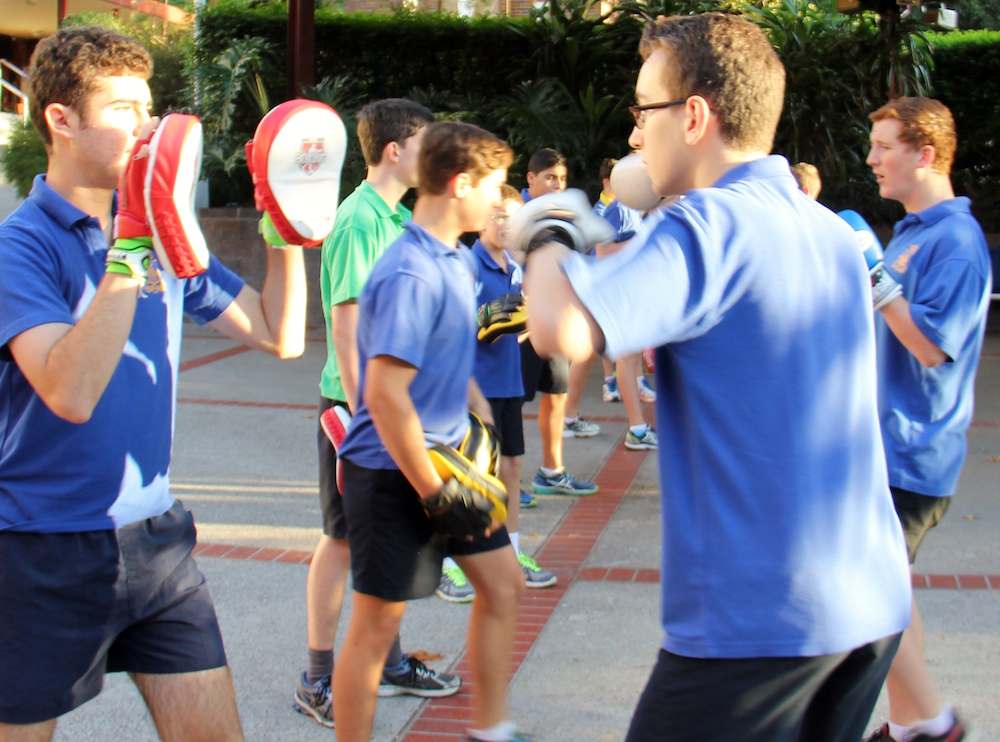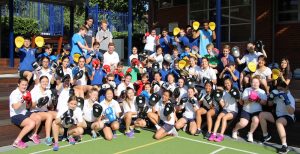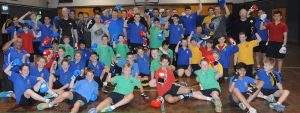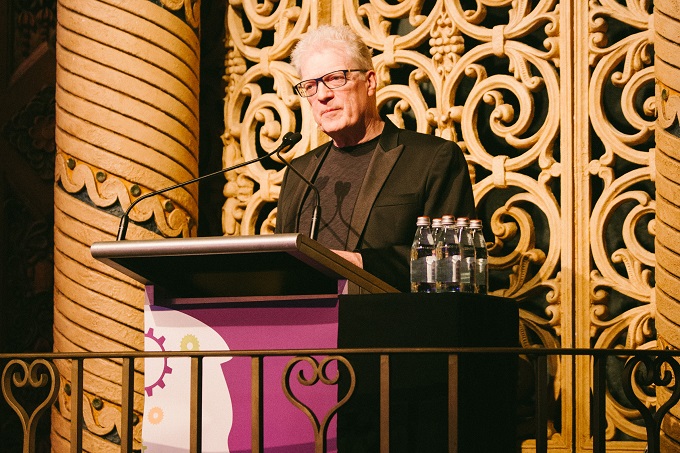Boxercise proves a knock-out for mental health

St Pius X College is a Catholic boys’ college located in Chatswood, in Sydney’s northern suburbs. A decade ago, the school received the most tragic wake-up call imaginable; they lost a student to suicide.
“It really made us take stock and look at how our boys were connecting within the school community,” school counsellor, Rick Russo told School News.
Following the tragedy, they “decided to go through a cultural change”. Rick Russo: “we needed to explore other ways of promoting health and wellbeing to students to keep them connected.”

This concept of connection is important to Mr Russo, who concurs with Dr Justin Coulson of the Positive Psychology Institute, whose view is that ‘screen time’ is creating division and isolation for young people. “Kids are too dependent on devices, and less willing to talk to people,” Mr Russo has observed. He worries that they miss out on opportunities to be surrounded by people and have fun with people in real life. “Gaming is isolating, opposite to connection, and it creates a disconnect from reality.” The school counsellor sees resulting behaviours such as avoidance, difficulty with or reluctance to face reality, poor communication and anxiety.
St Pius Catholic College engaged with MindMatters to implement a stress management plan to support the school community in the wake of the tragic loss, but also to ensure the students were well supported in the future – and to remedy some of this disconnectedness Mr Russo described.
The school’s inclusive culture of care extends to the teachers and staff. Programs for staff have included regular massage once a term, workshops in tai chi, laughter and boxercise and staff have regular opportunities to make use of the school gym.
Mr Russo is emphatic in his stance on exercise as a therapeutic antidote for mental health issues and stress. “I suffered depression for 20 years and I can tell you there are three things that help.” Mr Russo cited medication as something that was suitable for him, but the other two universals were “connection to someone who can help you move forward, and physical exercise”. As the school counsellor, he provides the latter two services, and boxercise has been embraced by the boys as a powerful self-help tool, and surprisingly, a motivating force that even gets teenagers out of bed at the crack of dawn.
‘From little things, big things grow’
The boxercise program was launched ten years ago “with a seedling grant from the NSW government” designed to fund schools efforts in promoting health education and student wellbeing. “To apply, we just had to come up with a program that would bring about an improvement in student health and wellbeing. St Pius was one of many schools to receive a grant of $1000 and with that grant; we initiated the program by buying the gear,” Mr Russo recounted.
A decade on, the program endures, and is wildly popular, with students ranging from year five to year 11 arriving at school 90 minutes before school begins, and some before 7.15am to set up the equipment. While the grant initiated the program, Mr Russo said, “we now get complete and continued support from our Parents & Friends Association”.
The benefits are by no means isolated to the physical body. “The boxercise program has become a student empowerment activity,” Mr Russo enthused, promoting self-esteem and providing opportunities for students to exercise responsibility, leadership and cooperation.
[pro_ad_display_adzone id=”6125″]“We have a year-ten group running the session at the moment, so they dictate how the session goes,” Mr Russo explained. There is no set year group running the sessions over the years, “it just falls to those who show enthusiasm and dedication”. “We have around 100 boys participating, and some kids come at 7.15am, giving up their sleep to set up, it’s self-motivating; kids love it so they want to be there.” Mr Russo said the program is “self-perpetuating” and is audibly proud of the students’ dedication. “There have always been kids who have stepped up and wanted to show initiative and be there for the younger kids.”
The motivation crossed institutional (and gender) lines in term four last year, when students from Mercy Catholic College joined the boys for a morning of boxercise. The program is set to repeat, providing opportunities for cross-college peer connection, “so boys and girls can meet, in a safe and supportive environment, and focus on their health and well-being,” Mr Russo added.

A culture transformed…
“We have a welcoming and inclusive school community,” Mr Russo reported, “and the students feel great pride in their college”. Visitors to the school report “a positive vibe” and “an inclusive sense of camaraderie” between students of all ages. “Kids are taking more control” and exhibiting proficiency in “help-seeking skills,” Mr Russo was happy to announce. “Kids now understand that mental health is a normal part of life.”

The students find comfort in knowing that someone is available to work through problems with them, although this support keeps Rick Russo busy. With triple the number of students seeking counsel, a part-time counsellor role was insufficient, and Mr Russo’s role is now full-time and supported by two part-time counsellors. The busy counsellor is seeing fewer students at the high-risk end of the support process however, because more boys are coming to talk about their problems earlier. The students’ issues range from crisis moments for kids at risk and grief counselling, to providing general emotional support. Students need support with processing emotions around problems such as relocations or the death of a pet as well as family relationships or romantic break-ups.
With underlying beliefs within our broader cultural context providing less space for males to express their feelings (though many individuals and associations are working hard to remedy this), this school is fostering emotional literacy in male students. According to Mr Russo, they are providing an environment in which vulnerability is allowed, and the vulnerable are supported. In time, let’s hope this focus contributes to a world where the words, ‘boys don’t cry’ are relegated to the annals of history.
“The culture allows the boys to be far more open about their feelings, in a trusted safe environment, Mr Russo told School News. “Boys self-refer, but there’s also been an increase in co-referrals”, with emotional support finding its place in ‘mateship’.
Mr Russo’s most significant source of pride? The culture of mentoring younger students at the school. “For the last 5 years, we’ve had a peer mentoring program where older kids volunteer to mentor younger students.”
The program entails fun activities such as paddle-boarding and rock-climbing, and a special ‘buddies not bullies’ bushwalk – all designed to build camaraderie and resilience. The culture of helping and supporting each other has resulted in something quite special. At St Pius, they have normalised boys seeking help about their feelings. “We want them to know that it’s ok to struggle.”

The school is dedicated to suicide prevention, and keeping students connected, with avenues of support is vital to that charter. Mr Russo reflected that when the school community suffered the tragic loss of a student to suicide, it was completely unexpected. “The student was on nobody’s radar, that can’t happen again.”
Advice to other schools?
Mr Russo emphasised that for project success you need “a driver”; someone to take on the project, to keep showing up and take responsibility for it. For St Pius, that was Rick Russo, but according to Mr Russo, it was principal, John Couani who embodied the “catalyst that was needed”.
Mr Couani has said: “young people today give me a lot of hope.” I would wager that their dedication to teaching boys to ‘expect to feel happy and seek help if they don’t’, might just have returned the favour.







